Cheers to 50 years
Allen D. Leman Swine Conference celebrates decades of strengthening the swine industry through scientific collaboration

Allen D. Leman Swine Conference celebrates decades of strengthening the swine industry through scientific collaboration
Dozens of guests wander through the research poster session at the 2024 Leman Swine Conference.
It’s been 50 years since the first Allen D. Leman Swine Conference convened in St. Paul. Guided by the mission of providing science-driven solutions to challenges faced by swine production, the conference has served as a hub for discovery and collaboration.
Over the past five decades, thousands of swine health and production professionals from across the globe have converged in St. Paul for the event, each bringing with them knowledge and ideas to be exchanged with the potential to progress facets of swine production.
“We are very proud to gather people who are very passionate about helping address issues that the swine industry is facing here and abroad,” says Dr. Montse Torremorell, chair of the conference planning committee and professor at the College of Veterinary Medicine.
While the first Leman Conference consisted mainly of lectures, the event has expanded over the years to include keynote speakers, presentations, workshops, social events, and research poster sessions. This year’s conference also featured a live carcass-cutting demonstration.
Two awards also were presented at the conference to honor the efforts of veterinary professionals and students.
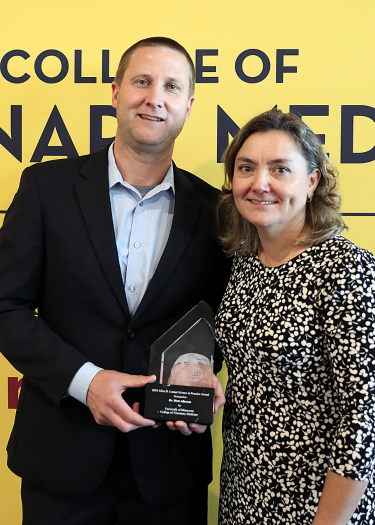
Dr. Matt Allerson received the Science in Practice award, celebrating his significant contributions to the field of swine health. The award recognizes swine practitioners who use science to solve critical health and production problems for pork producers. Allerson is internationally renowned for his expertise in disease control, health, and production. His skills as a teacher, mentor, and leader also are highly regarded.
“Matt is known and respected for his focus on scientific excellence, his collaboration, and for his leadership,” Torremorell says. “These qualities exemplify what we strive to honor with the Science in Practice Award. We salute Matt for his outstanding work and his generosity and humanity toward others in the industry.”
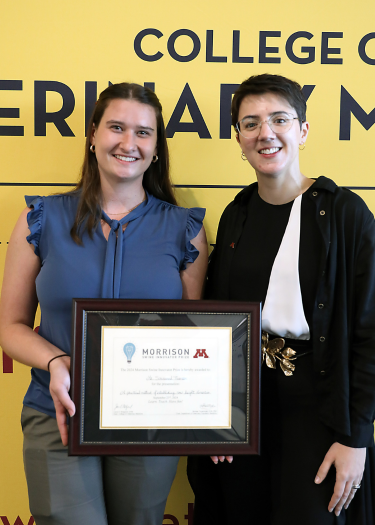
Savannah Thomson, a second-year student at Michigan State University College of Veterinary Medicine, received the 2024 Morrison Swine Innovator Prize, an award given to veterinary students who want to make a difference in swine health and production. Thomson won the award for her work on creating a Pig-O-Meter, a tool for measuring pelvic crest and tail height in hopes that this data could be used to predict sows’ risk for pelvic organ prolapse.
“Savannah looked at a real issue in swine farming—pelvic organ prolapses—used knowledge from different species and designed a practical tool to be used every day, on the farm, to identify at-risk sows,” says Dr. Perle Zhitnitskiy, a CVM professor and coordinator of the Morrison Swine Innovator Prize. “She kept biosecurity and economic efficiency in mind for her design and demonstrated true innovation, in the spirit of the award.”
The 2025 Leman Conference will take place Sept. 20–23 in St. Paul.

On a fall day in 1974, the seats in a small University of Minnesota lecture hall began to fill. The audience, while eager to learn, wasn't made of the usual college students.
They were swine veterinarians assembled for the inaugural Minnesota Swine Disease Conference, hosted by the University of Minnesota College of Veterinary Medicine (CVM) and the Extension Service. That first gathering seemed unremarkable, but over the past 50 years, the annual conference has had an impact beyond measure.
“The impact is on more than just swine medicine—it’s the whole swine industry addressing problems,” says Tom Molitor, a longtime CVM faculty member who has attended and helped organize the conference for 44 years. “This meeting brings the best scientists, veterinarians, and production people together and uses science to address emerging problems in the swine industry. Whether it's infectious diseases or other issues, we come together to create solutions.”
In the decades since that first gathering, the conference—now known as the Allen D. Leman Conference—has become a driving force in improving swine health and production on a global scale. As one of the largest annual swine educational events, it brings together veterinarians, scientists, producers, and professionals from across the world to learn, innovate, and celebrate the science advancing the industry.
It’s a combination that sets the Leman Conference apart from other events within the industry and has grown its reputation through the decades. Starting as a humble series of presentations, the conference has expanded to nearly 1,000 attendees and features dozens of speakers, sessions, and workshops held over four days.
That success story starts with the Leman Conference’s focus—science-driven solutions—and its ability to put people from across the swine industry in the room together to share knowledge and collaborate on solving problems.
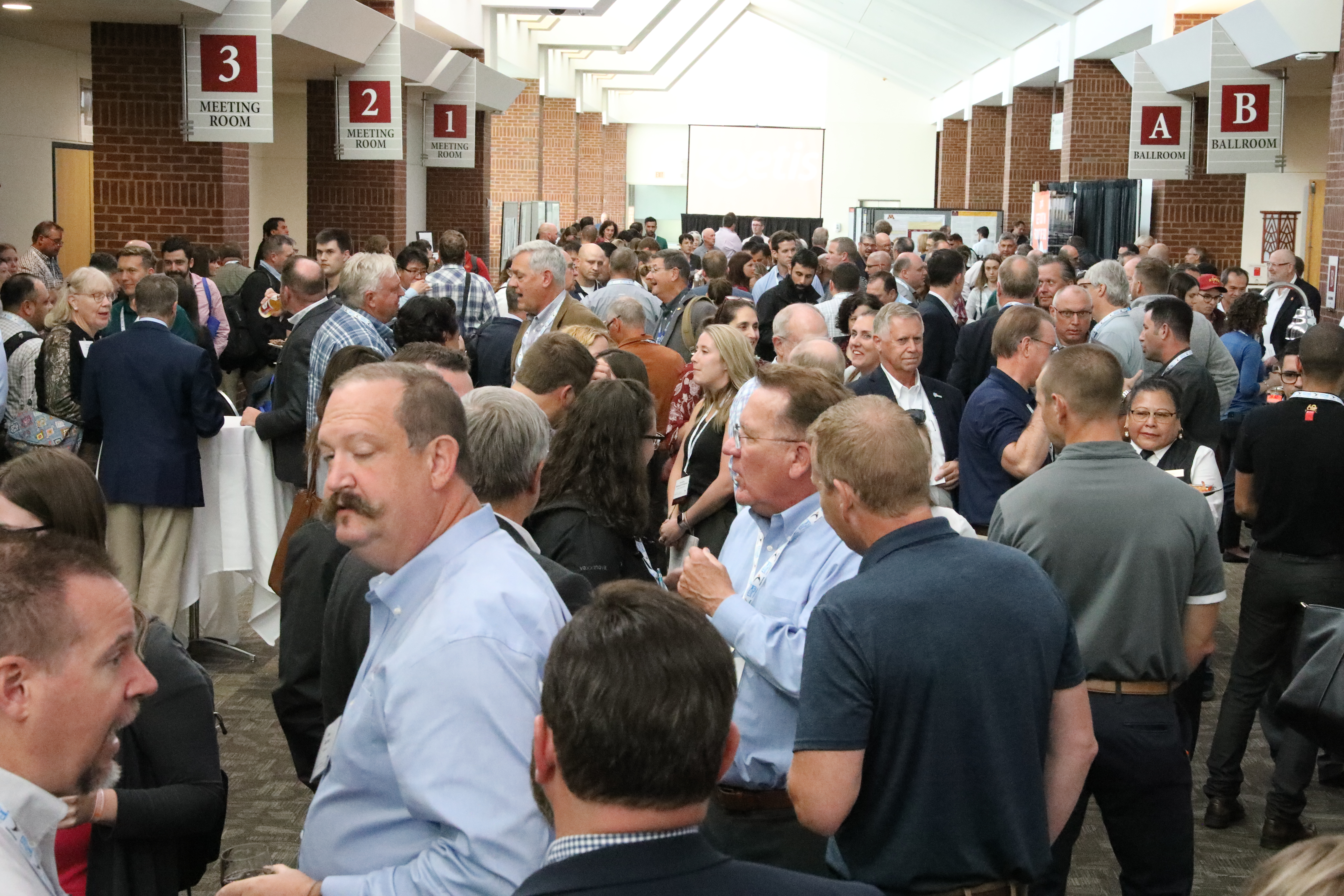
The idea to bring people together to improve swine health and production took root in the mind of a man named Al Leman more than 50 years ago.
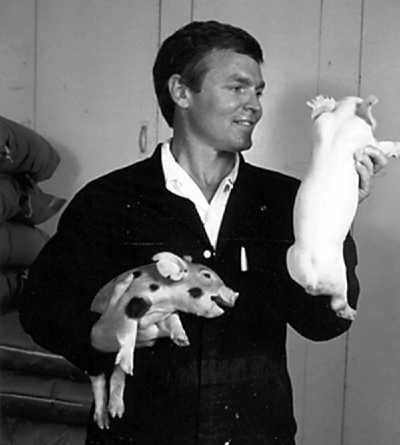
Leman joined the UMN as an Extension veterinarian in 1973, with a vision of developing a multidisciplinary team of scientists focused on one species: pigs. This foresight would lay the foundation for the University's Swine Group and an educational conference focused on swine.
Together with Jim Hanson, director of CVM’s continuing education program, Leman gathered Minnesota swine veterinarians for the first Minnesota Swine Disease Conference—and it was a hit. Word spread and more swine health experts sought to attend and present each year.
The format appealed to Tom Wetzell, a veterinarian who has worked as a swine consultant for more than 40 years and become a regular attendee of the conference.
“Each year, somebody from these different practices would bring case studies to the group, and they were really intriguing at that time,” he says. “It would be perplexing cases that people were trying to figure out in production medicine—and you'd try and talk about those issues in a group setting there.”
Soon, swine producers and professionals also wanted a seat at the table to discuss and confront the problems they faced.
For over a decade, Leman was the conference’s driving force, as he worked to define the link between swine disease and swine production. After he left his full-time position at the University in the mid-1980s, CVM professor Bob Morrison would eventually take the conference’s helm. Like Leman, Morrison was passionate about the swine industry and helping veterinarians and producers address their challenges.
Over the decades, the conference continued to grow under Morrison’s lead, expanding from solely Minnesota swine veterinarians to swine professionals across the U.S. and the world. It became a hub for exchanging knowledge and using it to progress the industry.
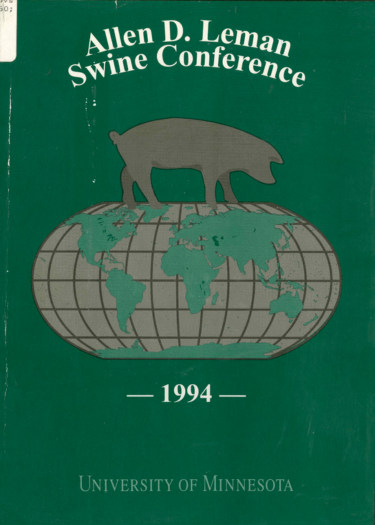
Even as the conference continued to grow, adding speaker sessions and garnering larger audiences, those conversations have remained a key aspect of the event. It’s something that appeals to Kent Holden, a co-owner of Holden Farms, a swine and turkey operation headquartered in Northfield, Minn.
“For me personally, it's an opportunity to see people and see what other people are doing around the country—to see what is on the horizon,” he says. “I’m a big believer in face-to-face interaction and conversation.”
Diseases often are at the forefront of those discussions. From pseudorabies to porcine reproductive and respiratory syndrome virus to influenza virus, the conference has served as a catalyst for understanding, eradicating, and preventing swine illnesses for decades.
While effecting change, the Minnesota Swine Disease Conference also has evolved through the years. In its third decade, the conference underwent a big change: its name. Following the unexpected death of Al Leman in 1992, the event was renamed in his honor as the Allen D. Leman Swine Conference.
In 2012, the conference reached another milestone when it went international. The first Leman China Conference attracted 1,000 participants from 13 countries. It has seen significant growth over the past decade, with the 2024 conference expecting more than 10,000 attendees and 1,200 exhibitors.
The impact of the Leman Conference is felt across the swine industry—not just at an institutional or company level but by those who live and work within it.
“It was enormously helpful to my career,” says Jim Collins, CVM professor emeritus and former director of the University of Minnesota Veterinary Diagnostic Laboratory. “The interaction with the practitioners is so important. I learn as much from the meeting as anyone. To have the veterinarians sit next to producers is really important.”
In its early days, that aspect likely helped lay the foundation for Minnesota’s current swine production. While competition existed between veterinary clinics serving swine producers, Wetzell says the Leman Conference brought clinicians together to collaborate.
“We found some bonding there—we were able to share and trust in a way that I think helped our industry in Minnesota grow pretty rapidly,” he recalls.
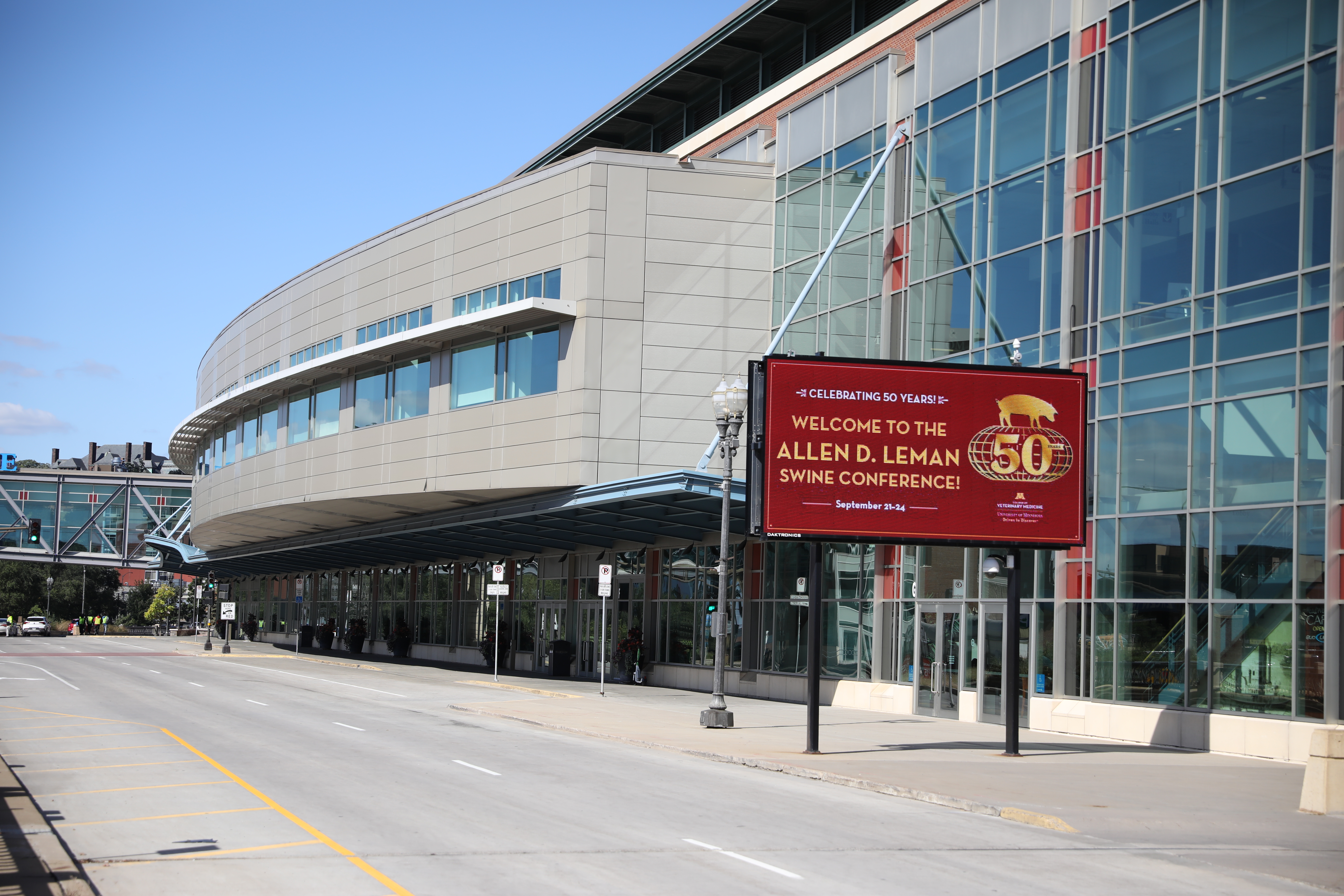
Decades later, the conference continues shaping careers and driving discovery in the swine field. It’s an impact that touches every facet of the industry.
It’s difficult to predict what the next 50 years of swine health and production will look like, but the Leman Conference will be there to contribute to solving problems that future scientists, veterinarians, and producers will face.